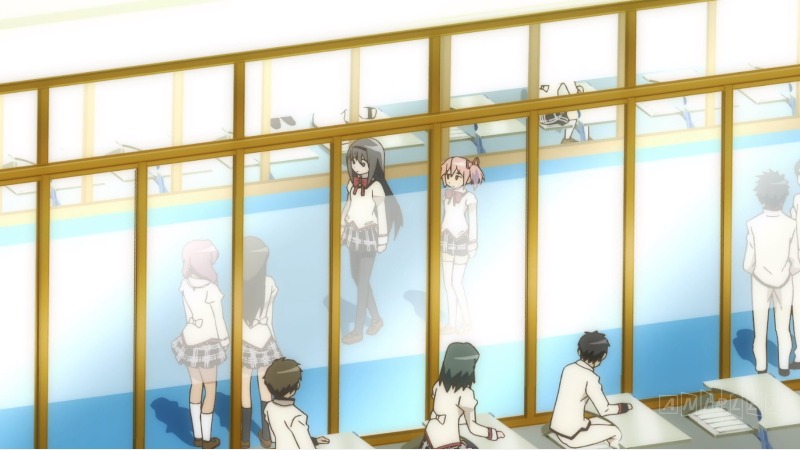I have posted a couple of articles about hair color in anime here at The New Leaf Journal. The direct prompt for that loosely-organized series came from my researching an article about hair color controversies involving real students at Japanese schools. But anime hair color and styles in the 2D realm has been on my radar for a long time, going back to 2012, to be exact. There, I learned that for some people, 2D anime characters do not have hair, but instead are defined by hair.

The Backstory
For the most part, I spent little time on campus in college. I designed my schedule to have classes as close together as possible. Unless I was meeting people after classes, I went straight home.
In spring 2012, two anime series were airing on Crunchyroll that my friend and I were watching. The first was Puella Magi Madoka Magica, which I included as a secondary recommended anime of the decade in my article on that subject (scroll down for Madoka). The second was Kids on the Slope.
After class on Thursdays, we would meet and get a study room in the library. Instead of studying, we would watch Madoka and Kids on the Slope on my friend’s laptop.
Just as well. Studying is overrated anyway. You become a philosophy major so you do not have to study. Just read.
But I digress.
Hair-Change Confusion
I will report the pertinent story as best I can without spoiling the plot of Puella Magi Madoka Magica. I figure that I ought not to since I recommended it on site just a few months ago.
Madoka is a dark magical girl anime, where being a magical girl brings little but despair. The series does not throw all of its cards on the table until it is near its end.
One of the later episodes takes the viewer back in time – in a sense – to events that occurred before the first episode. Unsurprisingly for a flashback, one of the show’s main characters – “Y” – looks different. Specifically, she has a different hair style.
I did not find this state of affairs at all confusing. This is because I was able to ascertain that this flashback episode was depicting events that had occurred prior to the episodes I had already viewed. Having this understanding, it made sense to me that “Character Y” had a different hairstyle than what I was familiar with. People can change their hairstyle. Look, I was a philosophy major.
I assumed that my friend was operating under the same understanding. For that reason, I was surprised when he stated about 10 minutes into the episode that, while he was enjoying the content, he thought that it was strange they were introducing a new character so late in the show.
Fortunately, we were able to clarify my friend’s misunderstanding in time for him to enjoy some of the more dramatic moments in the episode – which would have lost precisely all their impact had the 2D girl in question not been the same 2D girl we had been watching for a couple of months.
Lesson
Because this article tells a college story, I will use a college lesson to illustrate its moral. In one of my philosophy classes, the professor discussed the “Locke’s Socks” thought experiment – a version of the famous “Ship of Theseus” thought experiment, which you can read about on the Stanford Encyclopedia of Philosophy. I will discuss it in a cursory manner below.
Let us say that Locke has a pair of socks. Locke’s socks develop holes. Locke patches the holes. Locke’s socks develop more holes. Lock patches the holes. So on and so forth. After a while, Locke has performed so many sock repairs that there is nothing left of the material that made up the socks when he first obtained them. Are these socks the same socks that he started with? Or are they fundamentally different socks?
We need not venture an answer to this 2,000-plus year old metaphysics question. I only brought it up because it is clear that the Locke’s Socks question is very simple when it comes to 2D girls.
If a 2D girl has straight hair, and then she puts her hair in pigtails, is she still the same 2D girl that she was when she had straight hair?
Absolutely not.
Or so I have been told.